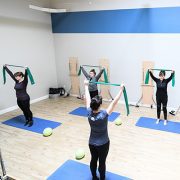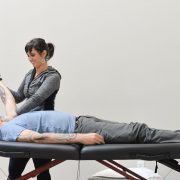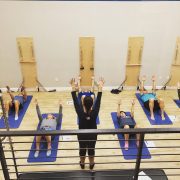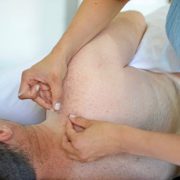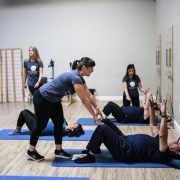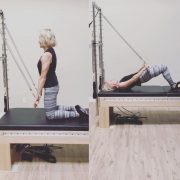Shoulder Injuries after Vaccination? What to look for
Shoulder injuries related to vaccine administration (otherwise known as “SIRVA”) is a rare, but possible occurrence when you get any vaccine.
SIRVA happens when a vaccine is injected into the capsule of your shoulder joint instead of your deltoid muscle. It can also occur if the needle being used is not the correct length for you, or if it’s administered too high or too deeply into your muscle. SIRVA is essentially a shoulder injury that occurs due to an improperly administered vaccine – not from the vaccine itself.
Now, it should be noted that this condition is very rare. However, due to the sheer volume of vaccines being administered right now – we have seen a slight uptick in unresolved shoulder problems here in our office. Anywhere from weeks to months after vaccination. For most, the shoulder pain is very mild and it goes away on its own. But for a select few, their shoulder pain has persisted and manifested into a more severe problem. This could be a sign you have SIRVA.
Since the signs and symptoms don’t show up right away, I thought it would be helpful to go over with you what is considered “normal” versus not normal shoulder pain after you get a vaccine.
You’ve likely heard of the “Moderna arm” by now. This is a mild skin irritation specifically related to the Moderna vaccine for COVID-19 that typically involves a mild rash and skin sensitivity after your second shot. It usually lasts about 3-5 days and can be easily treated with topical anti-inflammatories. Moderna arm is not considered to be anything serious, and although it’s not normal to experience this after most traditional vaccines, it is considered a common reaction to the Moderna vaccine. If you’ve recently had your second Moderna shot and are experiencing what you think could be Moderna arm, speak with your doctor or dermatologist if symptoms continue to persist past 5 days, just to make sure there isn’t something else going on.
Localized shoulder pain at the site of your vaccine injection is also normal.
We see this with any type of injection or vaccine into your arm, not just with Covid vaccines. The pain you feel is from the mild trauma caused by the needle being inserted into the soft tissue (muscle) of your arm. It often feels like a bruise, and you may experience a little bit of swelling. It will typically go away after 2-3 days. Even though your arm can be quite sore, the important distinction here is that you’ll still have full, normal function of your arm. In other words, despite the soreness, you can still move your arm freely up and down if you had to without restriction. Your arm soreness will go away with time, but gently massaging the area of pain, and even some easy movement or exercise can help the soreness go away a little faster.
The symptoms of SIRVA are different, and typically more severe than what I’ve just described above.
If not addressed, some of these symptoms could lead to long lasting shoulder problems. As I alluded to above, one of the main distinctions between “normal” shoulder pain after vaccination and SIRVA is how well your arm functions.
If the needle was accidentally inserted into your joint capsule, for example, you will notice limited mobility and possibly limited strength. When left unaddressed, symptoms like this can manifest into more serious shoulder problems down the line, such as adhesive capsulitis or frozen shoulder.
If the needle was inserted too high or too deeply, you can end up with shoulder bursitis, which means the needle was inserted beyond your muscular layer and directly into the bursa (a cushiony fluid-filled sack), causing it to become inflamed. Your mobility may or may not be impacted when this happens, but what you’ll notice is that your shoulder pain will take a lot longer than 2-3 days to subside. Bursitis is actually a really simple injury to treat, but where I see most things go wrong is that you can end up with compensatory problems in places like your neck, shoulder blade or elbow the longer it is allowed to persist.
The last thing you might see from an improperly injected needle is rotator cuff tendonitis. What you’ll notice with this is that you’ll likely have full mobility in your shoulder, but it will be very painful and weak to exert force in your arm. Much like bursitis, this is not a complicated injury to rehabilitate, but if not rehabilitated properly, it leads to other problems that do become more difficult to treat down the line.
So to summarize, your shoulder WILL hurt after getting a vaccine.
And with the Moderna vaccine in particular, you may notice some skin sensitivity, mild swelling, and even a rash.
But these symptoms should go away after a few days.
If you have shoulder pain that persists, and especially if you’re noticing limited mobility, it’s something worth getting checked out. The last thing you want is for these symptoms to go on longer than needed, or turn into compensatory, long lasting problems. The good news is that even with SIRVA, these problems and symptoms can be successfully treated naturally, and without medications or procedures. We’ve been successfully helping people right here in our office. If you’re worried about a potential shoulder problem after the vaccine and not sure where to turn – reach out. You can schedule a FREE Discovery Session with one of our specialists right here!


